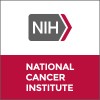
Dietary, Herbal and Alternative Medicine in Glioblastoma Multiforme
Brain and Central Nervous System TumorsCerebral EdemaRATIONALE: Giving the herb Boswellia serrata after surgery and radiation therapy may slow the growth of any remaining tumor cells. It is not yet known whether giving Boswellia serrata together with standard treatment is more effective than standard treatment alone in treating high-grade gliomas. PURPOSE: This randomized phase II trial is the study of a combination of complementary and alternative medicine (CAM) herbal supplement intervention as an adjuvant to standard treatment of patients with newly diagnosed and recurrent high-grade gliomas (HGG). The central hypothesis of this application is that a herbal preparation that inhibits 5-LO activity, will produce measurable biologically meaningful decrease in 5-LO eicosanoid production and brain edema that will be associated with improved survival and quality of life in patients with HGG.

Low-Dose Radiation and Combination Chemotherapy Following Surgery in Children With Newly Diagnosed...
Brain TumorsCentral Nervous System Tumors1 moreRATIONALE: Radiation therapy uses high-energy x-rays to damage tumor cells, but also damages normal cells in the developing brains of children. Combining low-dose radiation therapy in combination with chemotherapy should be effective in treating medulloblastoma while avoiding the long-term side effects of giving higher dose radiation to children with newly diagnosed average risk medulloblastoma.

Indium In 111 Pentetreotide in Treating Patients With Refractory Cancer
Brain and Central Nervous System TumorsChildhood Langerhans Cell Histiocytosis10 moreRATIONALE: Radiation therapy uses high-energy x-rays and other sources to damage tumor cells. Giving radiation therapy in different ways may kill more tumor cells. PURPOSE: Phase I trial to study the effectiveness of indium In 111 pentetreotide in treating patients who have refractory cancer.

Gene Therapy and Chemotherapy in Treating Patients With Advanced Solid Tumors or Non-Hodgkin's Lymphoma...
Brain and Central Nervous System TumorsLymphoma2 moreRATIONALE: Gene therapy may improve the body's ability to fight cancer or make the cancer more sensitive to chemotherapy. Drugs used in chemotherapy use different ways to stop tumor cells from dividing so they stop growing or die. PURPOSE: This phase I trial is studying the side effects and best dose of gene therapy together with chemotherapy in treating patients with advanced solid tumors or non-Hodgkin's lymphoma.

The Role of Bevacizumab in the Treatment of Radiation Necrosis in Children With Central Nervous...
Radiation NecrosisThis study is being done to learn about the safety of the study drug bevacizumab(Avastin®), when used to treat radiation necrosis. The primary objective of this study is to test the feasibility of treating Central Nervous System (CNS) tumor patients suffering from radiation necrosis with bevacizumab every 2 weeks. The secondary objectives of this study are: To evaluate improvement in neurologic symptoms associated with bevacizumab as assessed by clinical evaluation; To investigate the neuro-imaging changes in radiation necrosis associated edema, including Mass Resonance (MR) spectroscopy; To evaluate changes in corticosteroid use in patients with radiation necrosis following treatment with bevacizumab; To evaluate changes in quality of life.

Observing Young Patients With Ependymoma Undergoing Standard Combination Chemotherapy
Brain and Central Nervous System TumorsCognitive/Functional Effects2 moreRATIONALE: Gathering information about how young patients with ependymoma respond to standard combination chemotherapy and learning about the long-term effects of this treatment may help doctors plan better treatment. PURPOSE: This phase III trial is observing young patients with ependymoma undergoing standard combination chemotherapy.

Treating Patients With Recurrent PCNSL With Carboplatin/BBBD and Adding Rituxan To The Treatment...
Brain and Central Nervous System TumorsDrug/Agent Toxicity by Tissue/Organ2 moreRATIONALE: Monoclonal antibodies, such as rituximab, can locate cancer cells and either kill them or deliver cancer-killing substances to them without harming normal cells. Drugs used in chemotherapy, such as carboplatin, cyclophosphamide, etoposide, etoposide phosphate, and cytarabine, use different ways to stop cancer cells from dividing so they stop growing or die. Osmotic blood-brain barrier disruption uses certain drugs to open the blood vessels around the brain and allow anticancer substances to be delivered directly to the brain tumor. Chemoprotective drugs such as sodium thiosulfate may protect normal cells from the side effects of carboplatin-based chemotherapy. Combining rituximab with chemotherapy given with osmotic blood-brain barrier disruption plus sodium thiosulfate may kill more cancer cells. PURPOSE: Phase II trial to study the effectiveness of combining rituximab with combination chemotherapy given with osmotic blood-brain barrier disruption plus sodium thiosulfate in treating patients who have refractory or recurrent primary CNS lymphoma.

Acetylcysteine, Mannitol, Combination Chemotherapy, and Sodium Thiosulfate in Treating Children...
Bone Marrow SuppressionBrain and Central Nervous System Tumors2 moreRATIONALE: Drugs used in chemotherapy, such as cyclophosphamide, etoposide phosphate, and carboplatin, work in different ways to stop the growth of tumor cells, either by killing the cells or by stopping them from dividing. Giving more than one drug (combination chemotherapy) may kill more tumor cells. Mannitol may help chemotherapy work better by making it easier for these drugs to get to the tumor. Chemoprotective drugs, such as acetylcysteine and sodium thiosulfate, may protect normal cells from the side effects of chemotherapy. Giving acetylcysteine together with mannitol, combination chemotherapy, and sodium thiosulfate may be an effective treatment for malignant brain tumors. PURPOSE: This phase I trial is studying the side effects and best dose of acetylcysteine when given together with mannitol, combination chemotherapy, and sodium thiosulfate in treating children with malignant brain tumors.

Imatinib Mesylate With or Without Radiation Therapy in Treating Young Patients With Newly Diagnosed...
Brain and Central Nervous System TumorsPhase I/II trial to estimate the maximum tolerated dose of imatinib mesylate in newly diagnosed brain stem gliomas and recurrent high grade gliomas and to assess the effectiveness of imatinib mesylate in treating young patients who have newly diagnosed intrinsic brain stem glioma. Imatinib mesylate may interfere with the growth of tumor cells by blocking the enzymes necessary for their growth. Radiation therapy uses high-energy x-rays to damage tumor cells. Combining imatinib mesylate with radiation therapy may kill more tumor cells.

Temozolomide in Treating Patients With Leptomeningeal Metastases From a Solid Tumor or Lymphoma...
Brain TumorsCentral Nervous System Tumors1 moreRATIONALE: Drugs used in chemotherapy use different ways to stop cancer cells from dividing so they stop growing or die. PURPOSE: Phase II trial to study the effectiveness of temozolomide in treating patients who have leptomeningeal metastases from a solid tumor or lymphoma.
